The only ones left are the information desk workers and a few contractors renovating the aging buildings, stately domiciles with a story to tell, even as they sit silent and empty. Kinmen's Shuitou village (
Shuitou is one of several towns from which Chinese emigrated to other parts of Asia and the US in the first half of the 19th century. They went as migrant workers and merchants and left from Guangdong and Fujian provinces, as well as from this small island off China's east coast, to become one of history's most successful diasporas.
"Chinese began traveling a long long time ago," said Lee Hsi-rong (
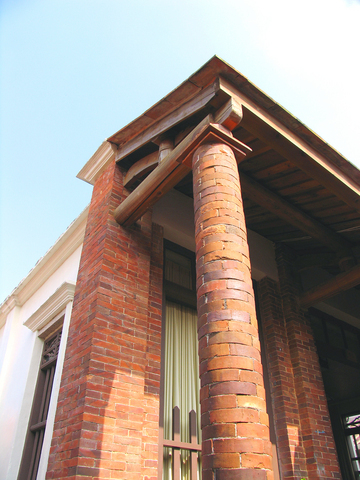
PHOTO: DAVID MOMPHARD, TAIPEI TIMES
At first, the government of the Qing dynasty -- which administered Kinmen as a part of Fujian province -- forbade its citizens to venture abroad. But overpopulation, a limited amount of farmland and frequent natural disasters and wars allowed residents of Guangdong and Fujian provinces to leave their homelands unchecked by the law.
Even as young men left in the thousands, others stayed behind and lobbied the Qing government to lift its restrictions on emigration. In 1860, with the signing of the Beijing Treaty, emigration was legalized and workers set off in even greater numbers in search of better job opportunities.
At the time, Western governments were actively seeking laborers from Southeast Asia. Chinese laborers volunteered their services abroad, but were often encouraged to do so by tales of places paved with gold.
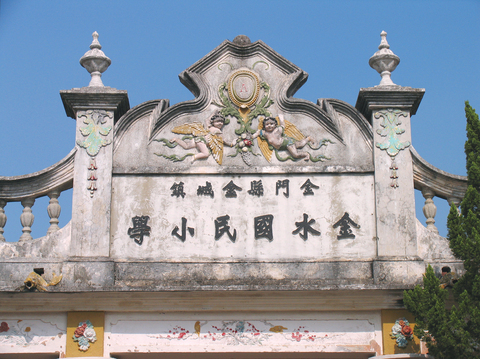
Initially, they were indentured laborers who worked in appalling conditions and there was a greater chance among immigrant workers of dying than of returning home rich. But as they toiled, their conditions improved and overseas communities developed.
The effects of this desire to become rich is nowhere more apparent than in Shuitou, with its rows of grand villas that reflect the architectural styles of the places to which its residents aspired: bungalow-styled homes reminiscent of those found in Great Britain's Southeast Asian colonies and an elementary school that echoes traditional Indian architecture
For the residents of Shuitou, emigration occurred in three waves. The first was around 1860, when people fled the many natural disasters that left them impoverished. The second was from 1912 to 1929, when Southeast Asian colonies were becoming prosperous and Kinmen merchants expanded their businesses to the region. The last came in 1937 to 1945, when locals tried to escape the ravages of the Sino-Japanese War.
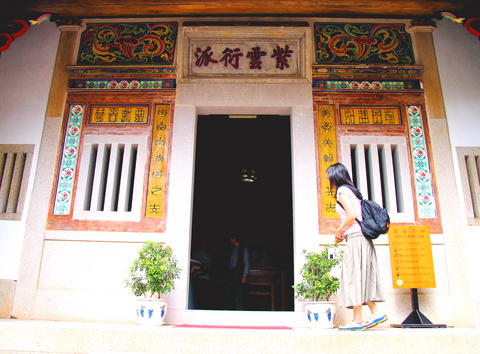
Traveling first to Xiamen, emigrants would board ships that sailed for five to seven days to Singapore, before departing for the Malay peninsula, Vietnam, Indonesia and further afield.
Many Kinmen residents went to places in Southeast Asia where they already had friends or relatives. As a result, these places developed into Chinese enclaves, many of which remain today.
In Singapore, for example, the Kinmen Guild (
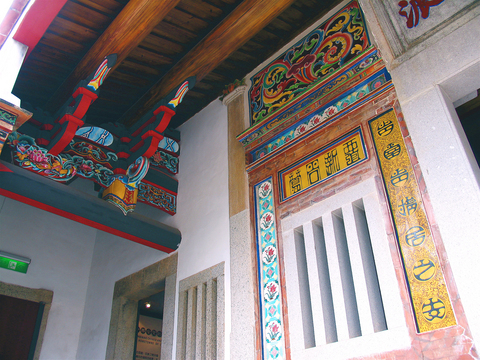
Most immigrants would remit their savings back to their hometowns.
The amount remitted grew substantially after the Qing government legalized emigration and reached a peak during the Sino-Japanese War.
During World War II, however, Japan occupied much of Southeast Asia and remittances ceased. Stability did not come for Kinmen with the ending of the war and emigrants ceased to send their savings back their hometowns.
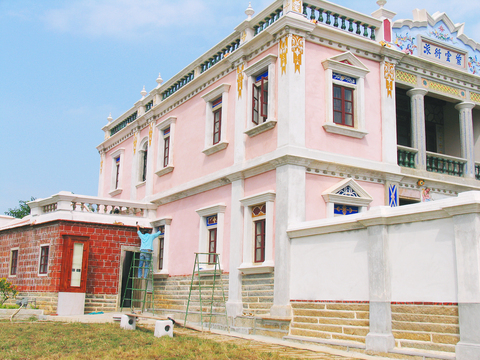
The whole point of the remittances, of course, was to allow the immigrants the chance to eventually return home to a comfortable retirement. Overseas Chinese sent letters with money drafts through a private postal agency called minhsinchu (
The minhsinchu not only delivered remittances, it helped spread the success stories of thousands of overseas Chinese and develop the dream of getting rich by going abroad. Nothing did more to inspire the emigration dream than the houses former immigrants built in their hometowns.
But the influence of emigration was felt in other ways when the merchants and laborers returned home. Besides a change in architectural styles, habits changed as well. This is when the first outhouses were built and other improvements in sanitation were made.
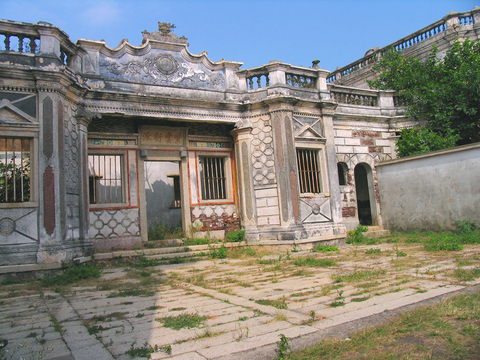
Clothing, much changed from the days of the Qing dynasty, became the Western suits merchants had worn abroad. Even the language changed. To this day, residents of Kinmen use the Malay word reun to mean "money."
The influence of emigration was felt in
education, too. Chinese who returned from overseas helped establish schools where their children would prepare to go abroad themselves by studying business and languages. In 1929, there were 25 elementary schools in Kinmen. By 1947, there were 53, built mostly with money remitted by communities of overseas workers and businessmen.
"The people of Kinmen are still emigrating," Lee said. "The sad difference is that they're not as concerned as their ancestors were about coming home."
How to get there:
Kinmen's Shuitou village is located on the southwest corner of Kinmen Island.
Accommodation:
If traveling to Shuitou Village, an interesting and comfortable choice of accommodations are the traditional Chinese courtyard-style houses that have been converted to bed and breakfast inns. Visit www.familyinn.idv.tw for more information, or call (082) 322 389.
Airlines:
Far Eastern Airline (082) 327 339, Transasia (082) 321 1501, Uni Airline (082) 324 481.
Tour buses:
Da Fu (082) 324 491, Nan Xing (082) 322 459. Kinmen Tourist Department: (082) 324 174 or http://tour.kinmen.gov.tw

On April 26, The Lancet published a letter from two doctors at Taichung-based China Medical University Hospital (CMUH) warning that “Taiwan’s Health Care System is on the Brink of Collapse.” The authors said that “Years of policy inaction and mismanagement of resources have led to the National Health Insurance system operating under unsustainable conditions.” The pushback was immediate. Errors in the paper were quickly identified and publicized, to discredit the authors (the hospital apologized). CNA reported that CMUH said the letter described Taiwan in 2021 as having 62 nurses per 10,000 people, when the correct number was 78 nurses per 10,000

As we live longer, our risk of cognitive impairment is increasing. How can we delay the onset of symptoms? Do we have to give up every indulgence or can small changes make a difference? We asked neurologists for tips on how to keep our brains healthy for life. TAKE CARE OF YOUR HEALTH “All of the sensible things that apply to bodily health apply to brain health,” says Suzanne O’Sullivan, a consultant in neurology at the National Hospital for Neurology and Neurosurgery in London, and the author of The Age of Diagnosis. “When you’re 20, you can get away with absolute

When the South Vietnamese capital of Saigon fell to the North Vietnamese forces 50 years ago this week, it prompted a mass exodus of some 2 million people — hundreds of thousands fleeing perilously on small boats across open water to escape the communist regime. Many ultimately settled in Southern California’s Orange County in an area now known as “Little Saigon,” not far from Marine Corps Base Camp Pendleton, where the first refugees were airlifted upon reaching the US. The diaspora now also has significant populations in Virginia, Texas and Washington state, as well as in countries including France and Australia.

May 5 to May 11 What started out as friction between Taiwanese students at Taichung First High School and a Japanese head cook escalated dramatically over the first two weeks of May 1927. It began on April 30 when the cook’s wife knew that lotus starch used in that night’s dinner had rat feces in it, but failed to inform staff until the meal was already prepared. The students believed that her silence was intentional, and filed a complaint. The school’s Japanese administrators sided with the cook’s family, dismissing the students as troublemakers and clamping down on their freedoms — with